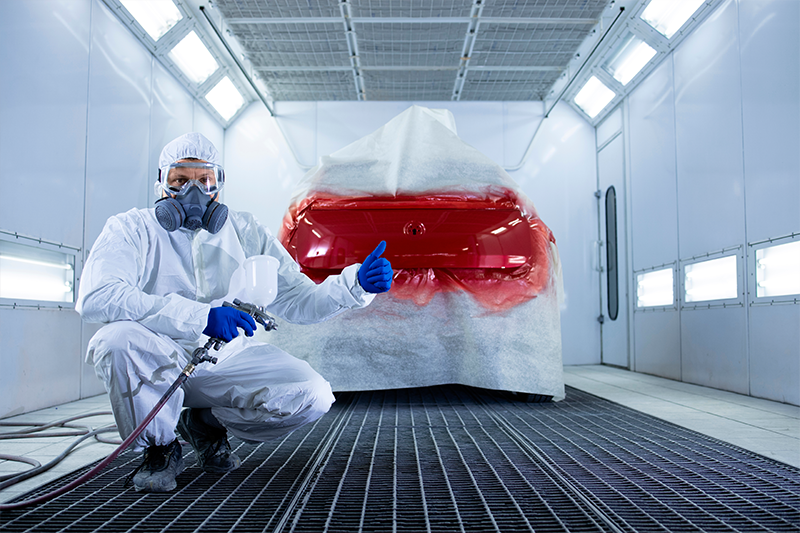
How do car factories paint their car bodies so uniformly and free of imperfections? If you always thought that painting mostly concerned brushes and compressors, continue reading the article!
We will talk about an essential accessory for perfect painting: the painting oven.
Painting oven: this unknown system
The automotive industry, but also other sectors such as plastics, needs to obtain extremely homogeneous painted surfaces. Consequently, to obtain quality and uniformity, special environments have been developed where the freshly painted products are brought, waiting for a drying treatment in a controlled environment: the painting ovens.
What does a painting oven look like?
There are several types of paint ovens. Some are small cabins, while others are so huge that seem garages or containers.
However, they all share 3 characteristics:
- They are closed environments, they don't communicate with the outside when they are working.
- They are aseptic environments, free of dust and pollutants.
- The environmental parameters are constantly monitored to ensure the success of the process.
What are the components of the painting oven?
Depending on the type of application painting ovens can vary a lot. However, all of them are equipped with air filters, ventilation systems and burners.
Air filters
What would happen if pollen, particulates and various pollutants land on the fresh paint? It would result in an unevenly painted product, since the particles suspended in the air could remain soaked in the paint, changing its physical properties and consequently its appearance. This is why filtering systems that block contaminants are needed in painting ovens.
Ventilation system
Although it is an industrial process to obtain very homogeneous products, the drying phase is based on the same principle as the hair dryer. In fact, an airflow is able to quickly dry the paints. Therefore, in the painting oven there are special fans capable of moving the air uniformly and with the right intensity. Depending on the applications, the airflow can be oriented horizontally, vertically, diagonally or transversely, with different variations of inclination.
Burners
In the previous paragraph we said that the basic principle of drying process of the paints is identical to the one of an hair dryer. Consequently, in addition to the airflow, heat also plays a fundamental role.
For this reason, the painting ovens are equipped with burners that raise the ambient temperature, favouring the drying of the paint.
However, raising the temperature is not enough to get a perfectly painted product. The temperature, in fact, changes according to the application and can vary according to the phase of the painting process.
This is why monitoring the oven temperature is essential...
... but how do you do it?
Temperature monitoring in the painting oven - a case study
An historical Tecnosoft’s partner leader in the production of painting ovens, needed to study the thermal processes that take place inside the ovens.
Consequently, Tecnosoft designed and built a temperature monitoring system to analyse the behavior of paints at different temperatures.
Here are the 4 tools that Tecnosoft used to obtain the required data:
- Thermocouples for measuring temperature.
- Data logger used for temperature monitoring.
- Thermal protection to protect the data logger from the heat.
- Data management software.
1. Thermocouples
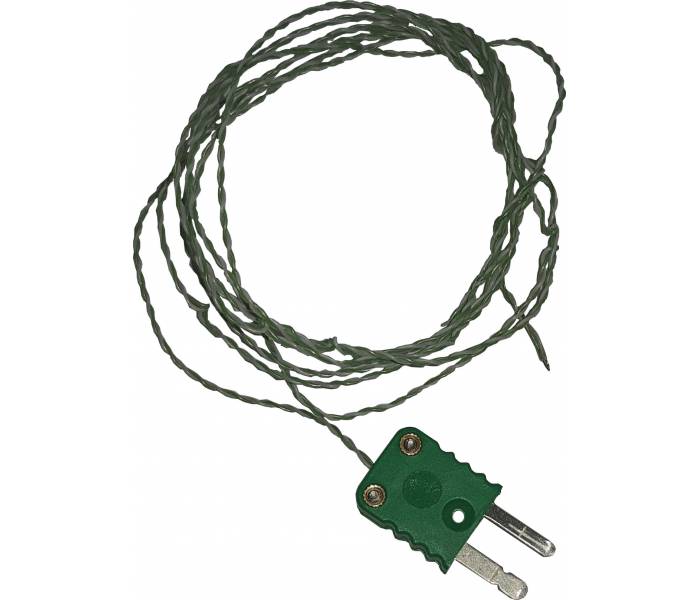 Thermocouples are sensors used to register the temperature conditions of the painting oven. They are chosen for this type of measurements due to their very small size and very fast response times.
Thermocouples are sensors used to register the temperature conditions of the painting oven. They are chosen for this type of measurements due to their very small size and very fast response times.
Another plus of thermocouples is their resistance. These are sensors that, despite their appearance, are truly robust, withstanding the harshest environmental conditions!
In this project, thermocouples were installed in different points of the furnace to measure local temperatures and check for any inhomogeneities in heat distribution.
2. TC-log
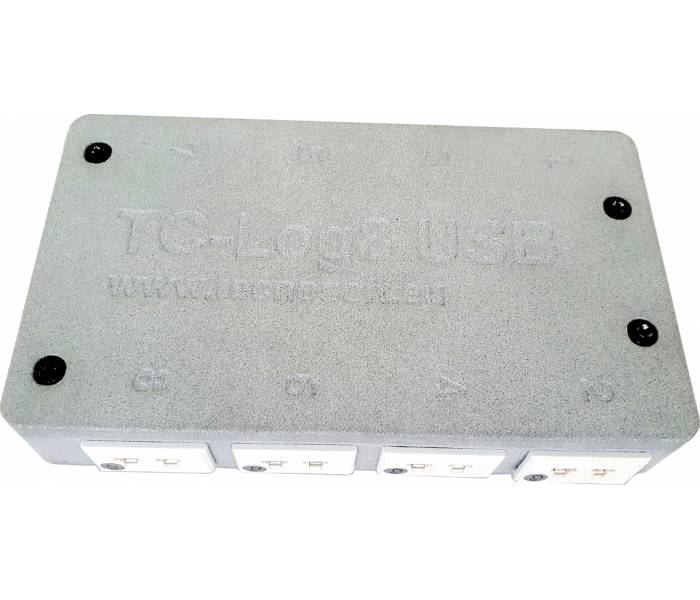 TC-log is a data logger that is an instrument intended for the collection of temperature data from thermocouples. Its function is to transform the sensors measurement into a digital data that can be processed and transmitted to different computer systems.
TC-log is a data logger that is an instrument intended for the collection of temperature data from thermocouples. Its function is to transform the sensors measurement into a digital data that can be processed and transmitted to different computer systems.
From this point of view, the TC-log is particularly versatile. In fact, it is possible to connect it directly to the PC via USB cable for real-time monitoring! Furthermore through the PC it can be calibrated to customize the data collection frequency.
It’s possible to connect up to 8 thermocouples to the TC-Log. In this case, Tecnosoft connected four thermocouples to measure the temperature of four corners of the oven.
3. Thermal protection
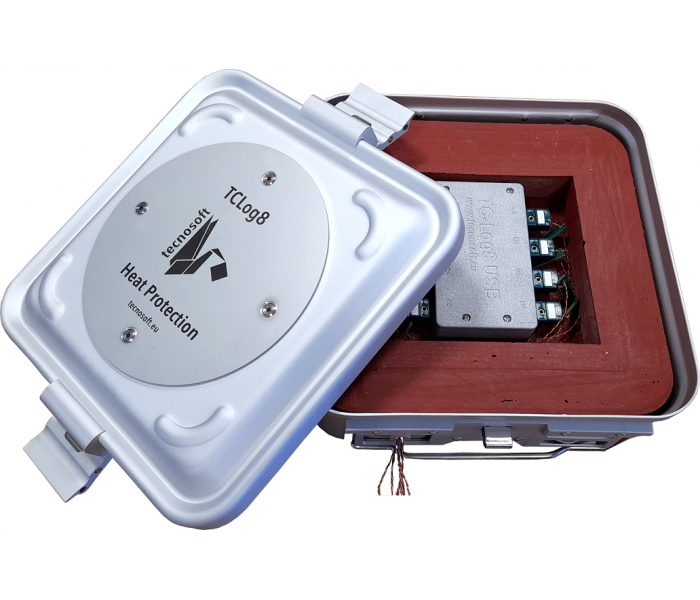 The TC-log, even if it is very resistant, it would quickly ruin if exposed directly to the hard environmental conditions of the oven. To prevent this from happening, a special thermal protection has been applied to the data logger. It is a thermally insulated metal box that acts as a barrier from the painting oven’s heat.
The TC-log, even if it is very resistant, it would quickly ruin if exposed directly to the hard environmental conditions of the oven. To prevent this from happening, a special thermal protection has been applied to the data logger. It is a thermally insulated metal box that acts as a barrier from the painting oven’s heat.
The compact dimensions (20 cm x 14.5 cm x 6.5 cm) make it suitable even for small ovens.
4. TC-log software for data management
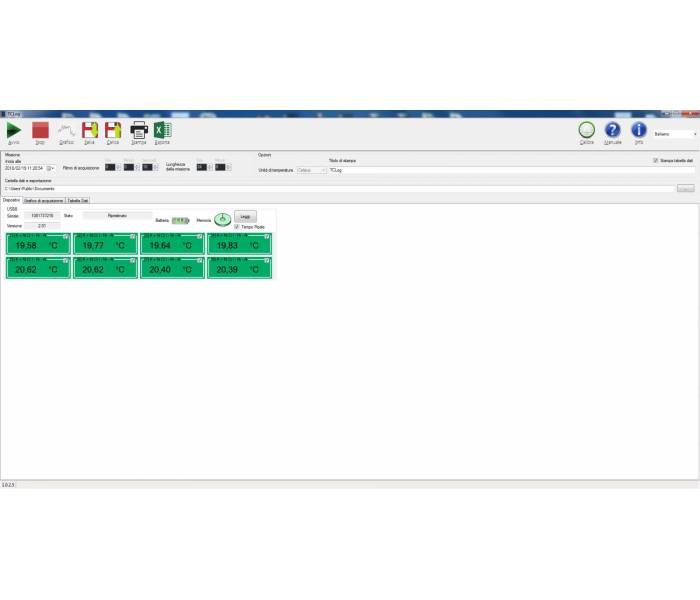 The TC-log data logger is connected via USB to a special software developed by Tecnosoft to facilitate the reading and the management of data. Using the TC-log software is simple and intuitive, and it can be used on all the most recent Windows operating systems.
The TC-log data logger is connected via USB to a special software developed by Tecnosoft to facilitate the reading and the management of data. Using the TC-log software is simple and intuitive, and it can be used on all the most recent Windows operating systems.
Through the program it’s possible to read the data but it’s also possible to control the sampling frequency, the start and the download of the data logger’s data.
The data is displayed in graphs, with the possibility of zooming and screenshots. In addition, printouts suitable for consultation with Microsoft Excel can be obtained.
Here is an example of real data collected in a working paint oven and reprocessed. The graph represents the temperatures recorded over a period of time in four different points inside the oven.
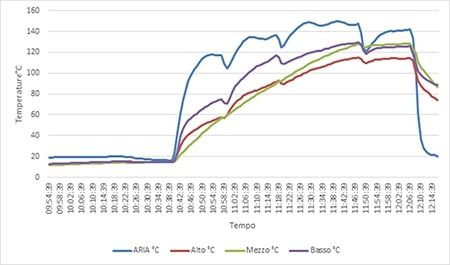
As you can see, temperatures may change greatly depending of the point of measurement.
It was impossibile to know this valuable data without the Tecnosoft monitoring system!
Are you interested about our solution for painting oven monitoring?
 Flip through our history
Flip through our history



